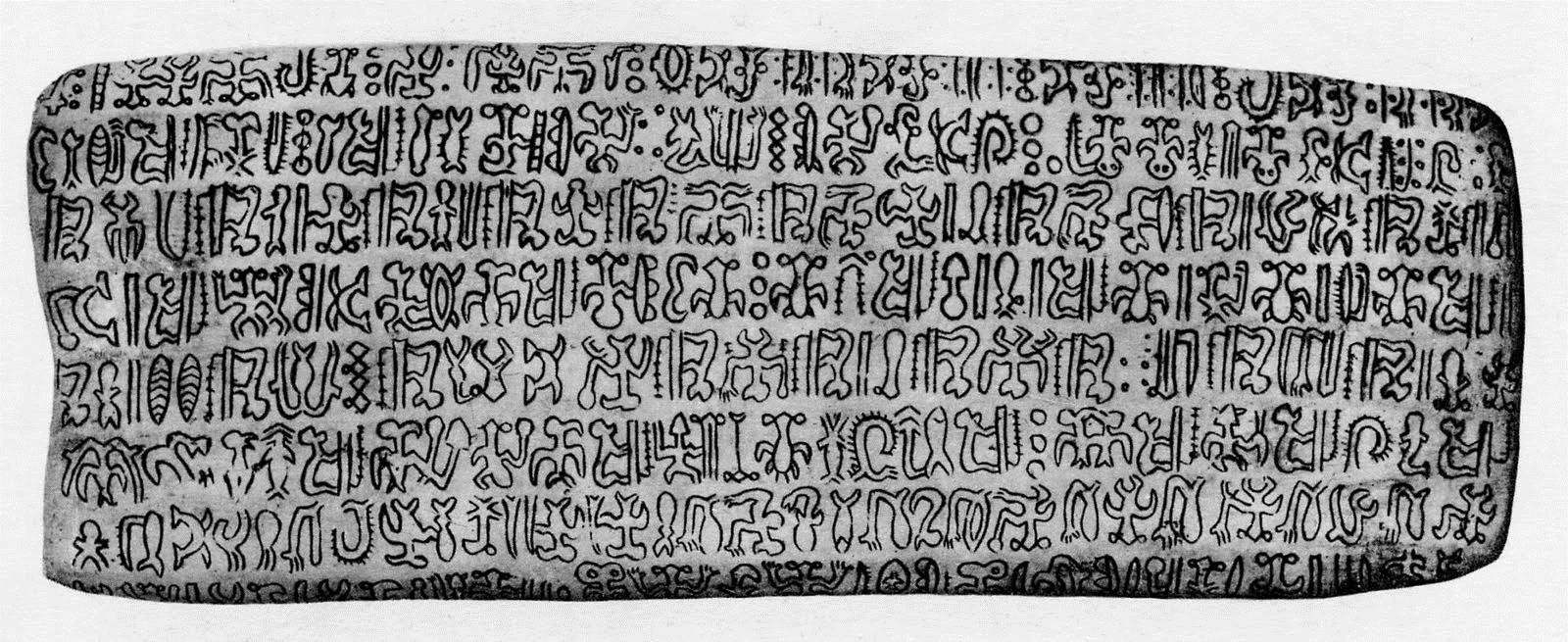
MONDAY, MARCH 9, 2016

Introduction
Bliss
Eric Lee, A-SOCIATED PRESS
TOPICS: CHARLES K. BLISS, SEMANTOGRAPHY, BLISSMBOLICS, LOGICAL LANGUAGE
Instead of constructing a spoken language, like Esperanto, for international use as an auxiliary language, alternative is a constructed written ideographic language intended to be universally readable only. As a concept-based language, all characters would be independent of spoken words.
Assuming a Rosetta book, any autodidact, not just the genius level ones, born to speak any of the current 6,000+ languages in use, could teach themselves to read the language. Having access to 7,000 years of hard-won learning—to recorded information, need not depend on an accident of birth.
Information, the "real wealth" of humankind, could be shared and preserved. We are the storytelling animal and information written ideographically, as memetic DNA, on durable material could outlast us. With a little help from a Rosetta book, a passing alien 100 million years from now could learn much of us if not from us. Per one study, a 9.5% chance of species extinction (our species) within the next hundred years is conceivable. I may not think so, but the universe doesn't care what I think. If nothing else, we should leave a record just because.
TUCSON (A-P) — Bliss can introduce his system of writing, his life's work, himself. His book was first self-published in 1949, expanded and republished in 1965. The second edition was also self-published, pounded on stencils with a typewriter with limited manual corrections possible. Redoing a page, let alone the entire book, would have involved more time and money than he had. It was the best he could do and is basically a collection of stuff he wrote over the years and had on stencils, that he put between book covers. He thought he had something of value and that it should survive his death (in a few libraries around the world) until humans realized they needed the heir of his invention.
Semantography (Blissmbolics) Second Edition, 1965, by C. K Bliss
(opens in new window; big ebook, wait for it, or right-click and save as). A friend of Bliss has OCRed the PDF into a searchable PDF: http://www.symbolnet.org/bliss/semantography50_ocr_take3.pdf. Right click and download, open in Acrobat Reader or whatnot. Early works by C.K. Bliss are being scanned and uploaded by a friend of Bliss: http://www.ergovancouver.net/se
Copies of Semantography are now rare, usually sell for over $1,000, but someone scanned the book. The pages have been somewhat cleaned up, straightened, and compiled one after the other into a PDF file by Friends of Bliss to make the 800+ page book readable.
Bliss was before his time. No one could see how to make big money by promoting or using his system. Ideologues, demagogues and advertisers realized it was a threat to business-as-usual (which has nothing to do with "performing an important service to mankind"), and nothing much came of his work. He was not a good writer. Make allowances to avoid missing the baby in all the bath water.
Will Bliss, in whatever form, replace Mandarin (Pinyin), Spanish, English, Hindi, Arabic, Portuguese, Bengali, Russian, Japanese, Punjabi, German, Javanese......all written languages? No. All have alphabetic forms of semi-phonetic writing (like English) that can be typed on a keyboard. One spoken language is not a goal. One shared written world language is. English literature can and should be printed to provide reading material for English speakers, and only for them. Mandarin reading material....in Mandarin for Mandarin speakers, and on and on.
Scientific American is translated into 19 languages, a drop in the 6,000+ language bucket. Should Scientific American be published in English and a few other major languages? Will there always be resources to publish it even in a few? One possibility is that in the future, due to resource limitations, it will only be published in English and Bliss. Every Bliss literate human could read the Bliss version. If publishing costs become too high, it could come down to Bliss. No real loss assuming even Americans learn Bliss. If all websites were in Bliss, ditto.
If/when technology fails, Bliss, with help from a Rosetta book, could be learned by whomever, whenever, and any material written in Bliss could be read. What humans have learned in the past 7,000 years could be preserved. This is the FoBliss (Friends of Bliss) vision.

At the risk of being pedantic, Charles K. Bliss intended his writing system to be ideographic, like Chinese was, which includes ideograms and pictograms. Yet Chinese characters are not considered ideographic, but "logographic." Logographs are written characters that represents a word or phrase. Actual users of them reference words in their native language, and the pedant insists that therefore they are logograms. Words are associated with characters, but words reference ideas or concepts also.
If the Bliss character for heart  merely suggests the word "heart" or "corazón" then it is not an ideogram, but a logogram. If you learn that the heart character in Bliss means human "feeling, emotion, instinctive proclivities, biologically mediated conditions such as desire, fear...." then it is an ideograph. If, as in the Far East, you know and deeply believe that the heart area is the seat of intellect, then you need to make allowances. In Bliss the heart character represents positive feeling if used alone and negative feeling if so indicated. You also need to know that Bliss associates brain with mind/intellect. It is impossible for a universal language to reflect all associations or ideas without "being wrong" from someone's point of view. So the price paid for a universal ideographic-by-intent language is that it will not be so "culturally sensitive" that it can't exist. Minimizing issues is reasonable. Failure to please all is a given.
merely suggests the word "heart" or "corazón" then it is not an ideogram, but a logogram. If you learn that the heart character in Bliss means human "feeling, emotion, instinctive proclivities, biologically mediated conditions such as desire, fear...." then it is an ideograph. If, as in the Far East, you know and deeply believe that the heart area is the seat of intellect, then you need to make allowances. In Bliss the heart character represents positive feeling if used alone and negative feeling if so indicated. You also need to know that Bliss associates brain with mind/intellect. It is impossible for a universal language to reflect all associations or ideas without "being wrong" from someone's point of view. So the price paid for a universal ideographic-by-intent language is that it will not be so "culturally sensitive" that it can't exist. Minimizing issues is reasonable. Failure to please all is a given.
"An ideogram or ideograph (from Greek ἰδέα idéa 'idea' and γράφω gráphō 'to write') is a graphic symbol that represents an idea or concept, independent of any particular language, and specific words or phrases." This is Bliss. If the characters come to represent a word to each user found in their native language, well, words happen. Bliss is not a logographic writing system, but in practice it may function as one. Bliss invites, and allows, getting the ideological mind of true believers unstuck on spoken logos that support ideological thinking. Ideographic ≠ ideological.
The overarching idea is: share and preserve information, the highest value product of humanity's experiment in living. Make minimum assumptions. If progress is ever upwards forever, then why worry? No reason. The assumption, however, is hyper-optimistic (see History 101). If there is a 1% chance of being wrong, that is reason enough not to assume all memetic DNA will always exist. A few books of the Maya survived. All information on paper and bit-based storage media we have may not (or be readable). A 99% loss is imaginable. The people of Easter Island developed Rongorongo, a writing system that remains unreadable as they left no Rosetta book. One million years CE may not be celebrated—and no movie of that name may be made. So "preserve" means for more than a few hundred years without assuming technology to read it. "Share" includes with all current 6,000+ language speaking humans on the planet. The elemental unit of memetic information is the page. No assumption can be made about what language someone, possibly non-human, speaks. Perhaps white mice will evolve into hyper-intelligent beings who will want to know more about the Anthropocene. Assume only a concept forming mind. A Rosetta book would allow any concept forming mind to learn to read any other books that may make up an Encyclopedia Bliss. This is likely a multi-generational endeavor. My personal goal is to develop Bliss to a point I can write the greatest story ever told and perhaps record it on clay tablets or print it on aluminum plates. Any other Friends of Bliss out there?
 Can you read Rongorongo? No one else can either. Harappa? Elamite? Minoan? Cretan? .... No one thought to write a Rosetta book. No one who could read survived. Be concerned.
Can you read Rongorongo? No one else can either. Harappa? Elamite? Minoan? Cretan? .... No one thought to write a Rosetta book. No one who could read survived. Be concerned.
"A Universal Symbolism, very popular, very agreeable to the people...might be introduced if small figures were employed in the place of words, which would represent visible things by their lines, and the invisible, by the visible, which accompany them." — Leibniz, 1679
"I think very highly of it. The logical analysis is good. The symbols are ingenious and easy to understand. If schools throughout the world (would) clarify the use of words calculated to promote passion, the existing hatred between nations, creeds, and political parties would very rapidly diminish, and the preservation of peace throughout the world would become an easy matter.... Any man or men who will spend the money necessary to get this work [Semantography] printed will, in my opinion, be performing an important service to mankind." — Bertrand Russell, 1950
"Bliss' work provides something of real importance." — Julian Huxley, 1954.
Frequently Denied Questions:
- Is Bliss purely ideographic? No.
- Is Bliss self-evidently logical or culture free? No.
- Is Bliss the language of the future? No, not as a spoken language.
- Will Bliss ever serve or be promoted by elite interests? No.
- Is Bliss good for whispering sweet nothings? No.
- Can English, or any natural language, be translated near word for word into Bliss? No.
- Will there ever be only one written language for one world? No, digraphy works.
- If I would rather believe than know, should I learn Bliss? No.
- Will individuals learn Bliss, self-organize, transmit information to posterity and be thanked for it? No.*
“People would rather believe than know.” ― E.O. Wilson
* Individuals could....., but they won't be thanked for it.

